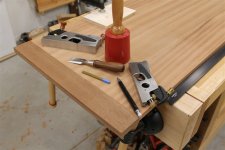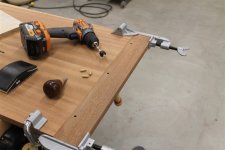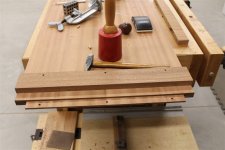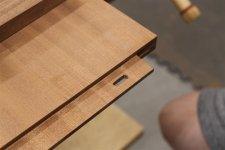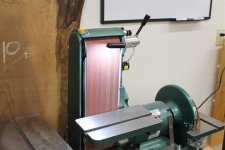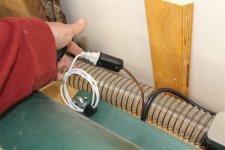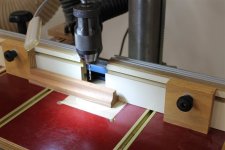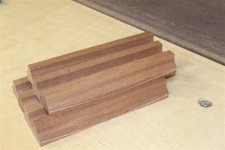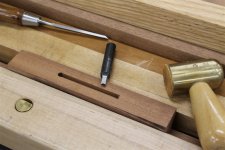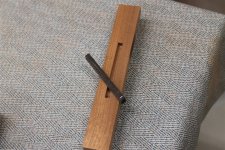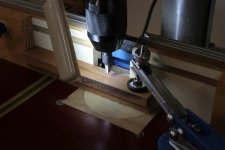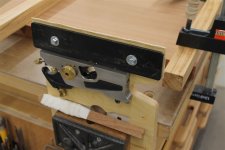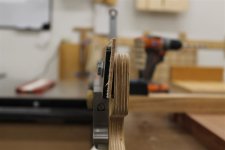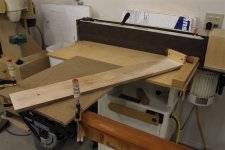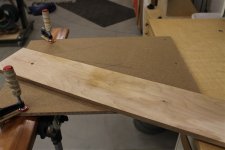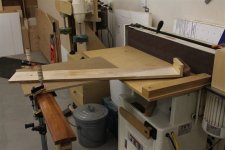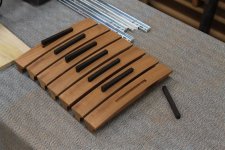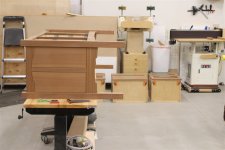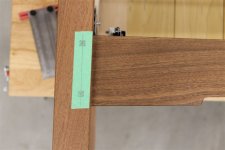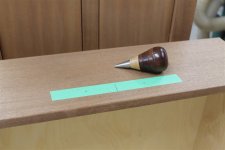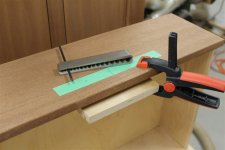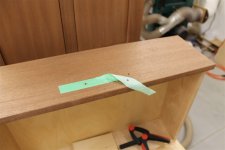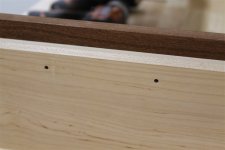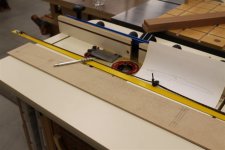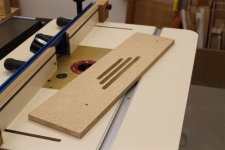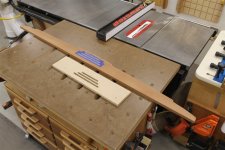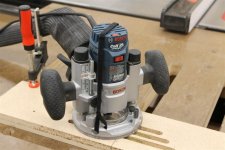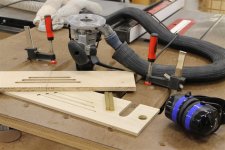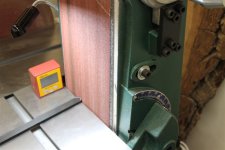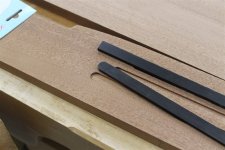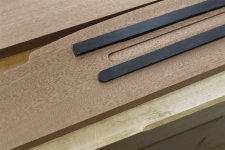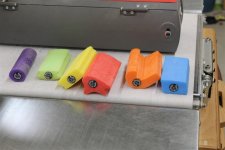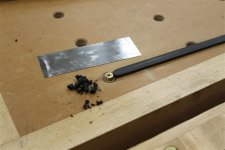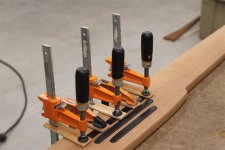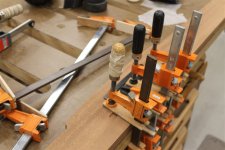I know I wandered off a bit on this. I had a set back on a couple of breadboard ends that developed an unacceptable level of twist. I had a bit of a personal struggle as all other elements of the part were fine. I finally had to admit that the amount of twist was going to cause issues I just didn't want to deal with.
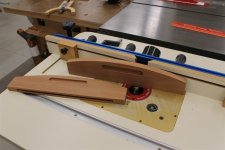
The good news is that I get to use the failed units as templates for the new ones thereby speeding up the "make another one" process.
I milled the new blanks oversized . . .

I let them acclimate for a couple of days.
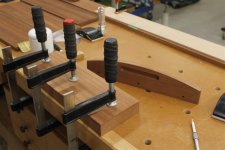
Qnce they proved stable I jointed, planed, ripped, and crosscut the required blanks from them.
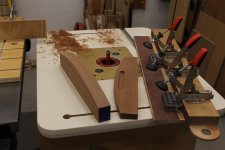
The failed originals worked fine for templates for the curves and other layout.
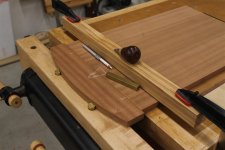
I use draw bore joinery for breadboards. I am sure most here have seen the use of a smaller diameter transfer punch to provide the offset draw bore hole in the mating piece. If not, search on draw bore joinery on Fine Woodworking's site. Lotsa good info there.

Above you see me using a 3/16" transfer punch to mark the hole location for a 1/4" through hole requiring a draw bore.
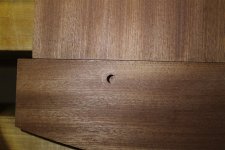
Peek-a-boo.
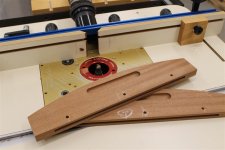
Once all profile routing and hand-grip routing are done I affix the breadboards to the panels.

The draw bore joints make a nice, tight, connection point.

